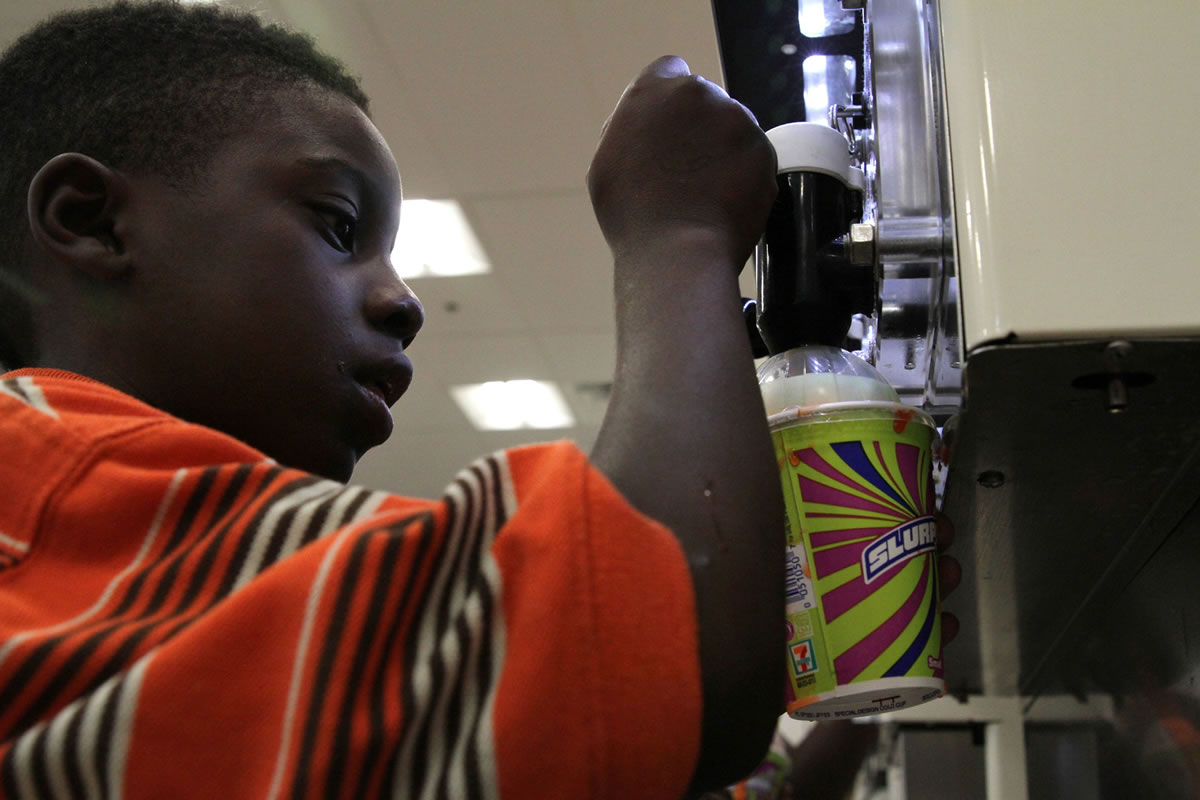Call it the battle of fried chicken versus made-to-order hoagies, both served with a side of gasoline.
Competition among convenience store chains has heated up as retailers vie to win over consumers by redefining and expanding “convenience.”
Chains such as 7-Eleven, Wawa and Royal Farms are rushing to build new stores, remodel existing ones, boost assortments of meals to go and, more often than not, sell gas out front.
Maryland-based Royal Farms, a 151-store chain in four states, opened a dozen new locations and rebuilt six last year. Known for its fried chicken, it is building nine new stores this year.
The chain is bolstering its home front against the likes of a larger and rapidly expanding Wawa and a newly aggressive 7-Eleven. Wawa is opening close to 50 new stores this year in a six-state area, about a third more than last year. And 7-Eleven launched a national push into urban areas.
All three aim to serve time-crunched consumers, who are turning more and more to large-format convenience stores not just for milk and candy, but for a fill-up and dinner.
“People want more convenience, and it just continues to escalate,” said Jeff Lenard, a spokesman for the National Association of Convenience Stores. “The reason that you’re seeing growth of convenience stores is people are continually redefining convenience. It used to be all that meant was extended hours of operation, then it became about convenient locations.”
Today, it’s all of that plus offering a single spot to fill the tank, withdraw cash and grab a meal, Lenard said. The new convenience stores are seen as more than a last resort to grab breakfast, lunch or dinner, he said.
“It’s gone from desperation to destination,” Lenard said. “More (stores) are in the food service business, and you know you can get a good meal. You’re seeing where people expect some of the best places to possibly eat can be at a gas station.”
It’s all with an eye toward staying ahead of the competition as convenience stores go head to head with drugstores, grocers, fast-food outlets, and coffee and doughnut shops.
In the past dozen years, the number of convenience stores nationwide jumped 25 percent to more than 149,000, including both single operators and chains, according to the convenience store association. That far exceeds the number of U.S. supermarkets, drugstores and dollar stores.
An average of 1,100 customers a day walk through the doors of any given convenience store that also sells gas, according to the association. They spend less than four minutes on average from the time they leave their car to the time they return, Lenard said. But in that short amount of time, they spend money.
Convenience stores’ $700 billion in sales last year edged past the total sales of restaurants and supermarkets and jumped well above drugstore sales, according to the association. Sales rose 2.2 percent in the stores and 2.9 percent at the gas pumps compared with 2011.
Gasoline sales are increasingly important, helping to draw customers into the stores. Just a few decades ago, gas stations sold most of the nation’s gas. Now convenience stores sell 80 percent of all fuel sold in the United States.
7-Eleven has a new rapid expansion strategy that targets key growth areas of New York City, Washington, Baltimore, central and southern Florida, Chicago and the West Coast, said Margaret Chabris, a spokeswoman.
Chabris said 7-Eleven began positioning itself for growth in the late 2000s when real estate values fell. The company was well-positioned financially to build new stores as other retailers pulled back on growth plans.
Convenience chains also have benefited by entering urban markets left under-served by supermarkets, Mackler said. And residents have embraced them.
“In some neighborhoods where there is a food desert, they use 7-Eleven and pharmacies as their grocery store,” he said.
Some shoppers are willing to pay the higher prices on staples such as milk and cereal, preferring to go to niche grocers such as Trader Joe’s for specialty items.
“People are paying up,” Mackler said. “Time and convenience are the most valuable commodities people have today.”



